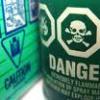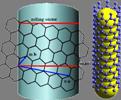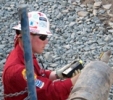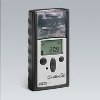Safety professionals are carefully observing OSHA's progress and beginning to take steps in anticipation of the final rule.

The final rule that is effective Nov. 30, 2010, adds them to the section 313 list of toxic chemicals, as EPA proposed in April 2010.

Improved procedures and lower testing costs are included in the industry's estimated savings of as much as 26.4 million pounds annually.
The report shows how Prevention through Design, which is linked to the National Occupational Research Agenda, is being broadly disseminated.

A UC Berkeley researcher recommends "anticipatory governance" approach, meaning nanotubes would be considered hazardous until their toxicity and behavior can be better understood.

There is little published information about air quality and ventilation rates in retail spaces, and ventilation requirements for retail have been set largely by data for commercial office buildings.
The meeting will discuss NIOSH's work on a performance standard for CBRN respirators. The project is Docket Number 082-A, Chemical, Biological, Radiological and Nuclear (CBRN) Combination Respirator Unit.

The first of the public hearings will be in West Virginia on Dec. 7. The hearings are about the proposed rule published Oct. 19.

The three authors of the paper published in the Journal of Occupational and Environmental Health conducted the research because there have been few studies on welders' exposures, especially in construction.
The online page allows users to track the trend lines for elevated blood lead levels in adult workers from 2002 through 2008 in construction, manufacturing, mining, and service industries.
The 48-page draft will replace the 2007 strategic plan guiding R&D by 25 participating organizations.

Fatal incidents where rescue capability is not standing by and available are all too frequent.

The strategic alliance dialogue begun in May 2009 is over, but ACGIH continues to explore a new structure so it can continue to develop the Threshold Limit Values (TLVs®).

The new group has created committees representing upstream, midstream/pipeline, downstream, and international, and another committee will evaluate content for upcoming conferences and mini-symposia, Administrator Michael Farris writes in its latest online magazine.
About $2.4 million is being awarded by the Indoor Environments Division to organizations that will educate the public on how to reduce pollutants inside schools, commercial buildings, and homes.
"We are continuing to find serious threats to miners' safety and health," said Joseph A. Main, assistant secretary of labor for mine safety and health. "While some operators are finally getting the message, others are not."

It is reversing the enforcement policy it has used since 1983, which allows most employers to use PPE and a hearing conservation program rather than engineering and administrative controls.
Members of this national advisory committee serve two-year terms and usually meet twice a year. They develop exposure guidelines for use in chemical emergency programs.

Are sulfide gases produced by the corrosive drywall's reaction with metal surfaces a health hazard? We don't know yet.

This free webinar features two specialists from Industrial Scientific Corp. explaining how Gas Detection as a Service solves common difficulties, increasing the visibility of your data and allowing you to take action.